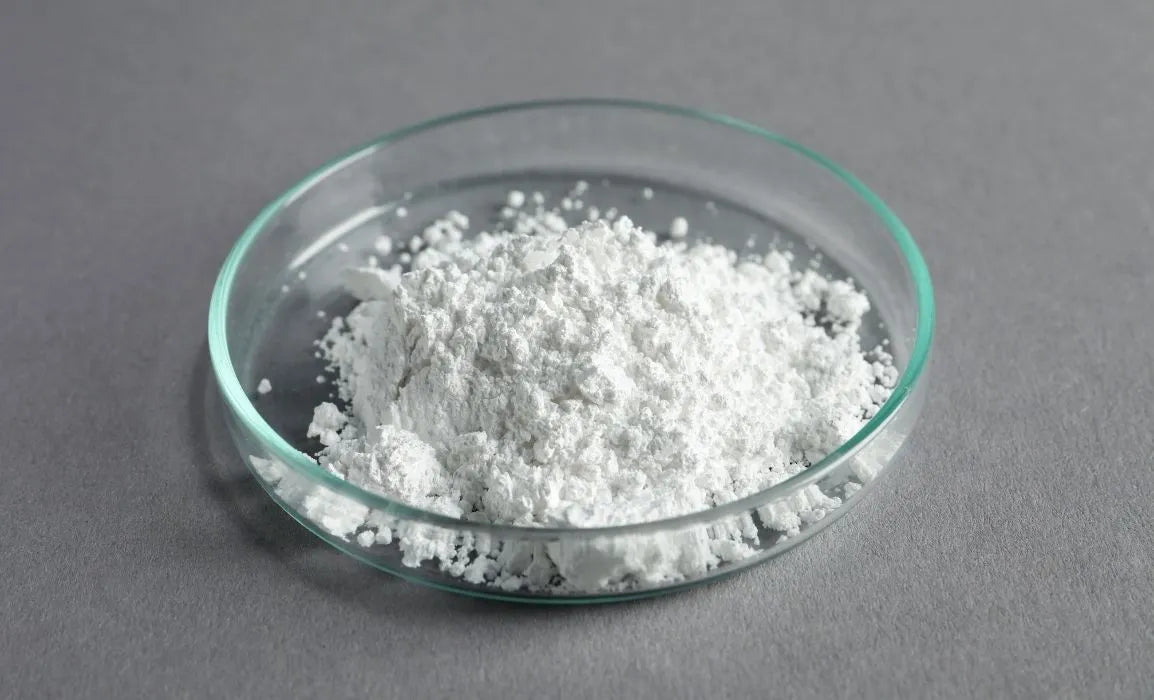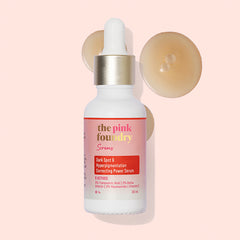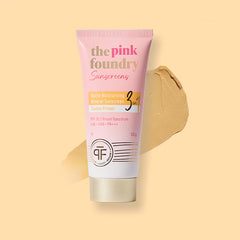Polymethylsilsesquioxane in Skincare

Introduction
Polymethylsilsesquioxane is a polymer made by condensing and hydrolysing the silicone methyltrimethoxysilane. It is mainly used in the cosmetic industry as a film agent and a skin conditioning ingredient. In its raw state, it is available in powder form with spherical-shaped particles. This ingredient was thus found to be safe by a survey when used in cosmetics and had no evidence of toxicity or sensitisation.
What is Polymethylsilsesquioxane?
Many cosmetics contain polymethylsilsesquioxane. The main role of this ingredient is forming films on the surface of skin or hair. It also improves their condition. Additionally, it prevents damage from occurring on the surface where it is applied. Furthermore, this type of polymer suits all types of skin, making it safe to use on acne prone and sensitive skin and can be used in anti-acne products.
So, what is polymethylsilsesquioxane? In short, it is a versatile ingredient in the cosmetic industry, known for its film-forming and skin-conditioning properties.
What does Polymethylsilsesquioxane do in skincare products?
In many kinds of cosmetics, this compound can function as a film-forming agent, skin conditioner and anti-ageing material. When used as a film forming agent, it forms a thin protective layer on the skin or hair. This protection will not allow the passage of water and restrict loss of water from the skin. It gives an appearance that is smooth and silky while conditioning it. It is particularly good for dry and sensitive skins because you can use it to make water repellent skincare products. By reducing wrinkles and fine lines that form on the skin, this property reduces ageing effects on the skin. Also, like other silicones do, it improves the spreading ability and sensory feel in any formulation. Moisture content greatly influences how fast the ageing process takes place for the skin as inadequate moisture may interfere with surface metabolism of the epidermis. It compromises resistance to infections leading to immunosuppression.
Polymethylsilsesquioxane benefits in skincare
This ingredient has numerous benefits and contribute to the general wellness of the skin.
- It forms a film on the skin’s surface. Then, acts as barrier against pollutants and harsh weather conditions. This compound keeps free radicals aways from the skin and reduces the probability of premature ageing.
- For individuals with oily or combination complexions, this product functions as an excellent mattifier. By absorbing extra oils and minimising shine, this substance keeps one looking fresh throughout the day hence giving your skin a matte look.
- It enhances other chemically active ingredients in cosmetic formulations. Its unique structure enables it to encapsulate such substances as well as stabilise them, thereby making sure they work their best on the skin. This feature boosts overall skincare product efficiency and ensures that optimal usage results are obtained.
Precautions while using Polymethylsilsesquioxane
The major precautions you should take into consideration when you are using products containing polymethylsilsesquioxane are listed below.
- Patch Test: Before trying out new products containing polymethylsilsesquioxane, you should undergo a patch test to ensure you do not get any reactions. For the patch test, use it on a small part of the skin and then wait for 24 hours to see if it will irritate or cause an allergic reaction.
- Skin Sensitivity: If your skin is sensitive or prone to acne, look out for any negative response by your skin towards the product. However, it is non-comedogenic as generally considered but can vary with individuals in terms of reactions.
- Avoid Broken Skin: Unless directed otherwise by medical professionals, these products should never touch broken skin.
- Eye Contact: You should avoid getting such products in your eyes. In case this happens accidentally, wash well with water in that area.
- Consult with a Dermatologist: Talk to your dermatologist before including new items such as skincare in your regime if you have underlying skin concerns or existing conditions.
- Storage: Products such as creams and lotions that contain polymethylsilsesquioxanes should be kept according to instructions and normally stored in cool, dry places away from direct sunlight so that their efficacy will not decrease.
Conclusion
In conclusion, polymethylsilsesquioxane is a phenomenal ingredient that unlocks the door to flawless skin. Additionally, it has a unique composition and extraordinary advantages, which make it an essential additive in moisturisers, smoothening creams, and sunscreens. The better people understand what this is and the more they become familiar with the term polymethylsilsesquioxane, the more they will appreciate its importance. Also, individuals must know the science that underlies polymethylsilsesquioxane as well as select appropriate products so that they can fully exploit its potential benefits for achieving a healthy complexion.
Nonetheless, one must be aware of potential side effects and take necessary precautions. Furthermore, ongoing research and developments assure a promising future for polymethylsilsesquioxane in skincare, providing more innovative formulations for different skin concerns.
Related Blogs

Skin Minimalism: The Simple Skincare Routine You Need
TABLE OF CONTENTS What is Skin Minimalism? Benefits of Skin Minimalism Best Minimal Skincare Routine Skin...
Continue Reading
Ethyl Ascorbic Acid vs. L Ascorbic Acid: Which Vitamin C Form is Best for Your Skin?
TABLE OF CONTENTS Ethyl Ascorbic Acid vs L Ascorbic Acid: Key Differences Benefits of Each Form of Ascorbic Acid ...
Continue Reading
Best Anti-Aging Ingredients You Should Include in Your Skincare Routine
TABLE OF CONTENTS Best Anti-Ageing Ingredients for Skin How These Ingredients Work How to Use Anti-Ageing Ingredi...
Continue Reading
How Often to Use Salicylic Acid: Finding the Right Frequency for Your Skin
TABLE OF CONTENTS How Often Should I Use Salicylic Acid Serum? How Often to Use Salicylic Acid for Specific Skin Types ...
Continue Reading















